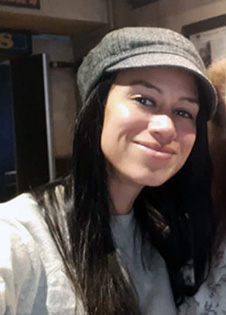Students at the School of Biomedical Sciences have actively been incorporating te reo Māori into their teaching and learning experience.

Flynn Macredie.
300-level Immunology student, Flynn Macredie, recently submitted his MICR334 poster assignment, written entirely in Māori.
Flynn did this for several reasons very close to him, including wanting to contribute to the de-stigmatisation of the language, to show people that there is value in learning this taonga (treasure) and to encourage people to increasingly use the language in their day-to-day conversations.
“It is important to me that people know that one can work in the science world and have a Māori identity,” Flynn says.
“Though there is still much work that needs to be done to facilitate this vision of Mana Māori Motuhake (a separate Māori identity), Tino Rangtiratanga (true leadership), Tiakitanga (protection of a person) and Ōritetanga (equality) in the science world.
“I would encourage people to learn and use Māori, not matter how little because each word is a steppingstone towards fluency.
“I myself can speak Māori but not to a level where I feel comfortable enough calling it fluency though I set myself an initial milestone of doing some kind of University work in Māori and plan to grow from there; reading a full book in Māori and eventually doing a full speech in Māori.”
Flynn's poster is now being displayed in the Department of Microbiology and Immunology to encourage other students to follow this example.
Professor Roslyn Kemp from the Department of Microbiology and Immunology, says it is important students know that this is something they can do at the School.
“I would like students to, not only be aware of Flynn's submission, but to be encouraged to submit their assessments in Māori,” Professor Kemp says.
“We were so glad to have received an assignment promoting the language like this and so we wanted to display it in the Department.”
He is not the only one to have done this, with PhD candidate Allison Miller writing the abstract to her paper in Māori alongside an English translation.

Allison Miller.
Allison was able to do this with the help of her supervisors Dr Alana Alexander, Professor Neil Gemmell and Dr Cindy Baker, as well as receiving te reo support from Peter Williamson and Hanareia Ehau-Taumaunu.
Her paper is on kanakana/piharau (pouched lamprey) and tests whether genomic (genome-wide genetic) data is an effective and ideal way to monitor 'difficult to manage' fish species.
“These 'difficult to manage' species are challenging for guardians like tribes and stakeholders to care for because they often have elusive behaviours like being nocturnal and having complex life stages,” Allison says.
“I am applying genomic methods to kanakana/piharau to determine if these are an efficient form of data collection which can then be applied to other species.”
With kanakana/piharau being a taonga species to iwi across New Zealand, she wanted to provide a te reo abstract to her paper to acknowledge the importance of kanakana to these groups and acknowledge the mahi (efforts) of kaitiaki (caretakers).
Peter Williamson shared her sentiment and acknowledges the outstanding work done by both Flynn and Allison.
“The Māori language brings unique insight to the table that can potentially support problem solving and future scientific research,” Mr Williamson says.
“Within studies of flora and fauna, the language can kick-start a science project by providing clues often present within Māori words that link to places, stories, waiata and historical events.
“In line with Flynn's pioneering poster in te reo Māori, I would also like to acknowledge a recently published abstract on the kanakana written in te reo Māori by Dr Alana Alexander for a paper submitted by Allison Miller.
“These pioneering te reo initiatives at the school offer a glimpse of how the Māori culture can bring so much beauty, knowledge and opportunity to our table.”
Korero by the Communications Adviser for the School of Biomedical Sciences, Kelsey Schutte.
Flynn Macredie MICR334 poster assignment
Department of Microbiology and Immunology: Professor Roslyn Kemp
